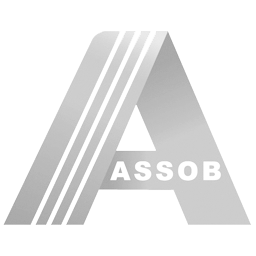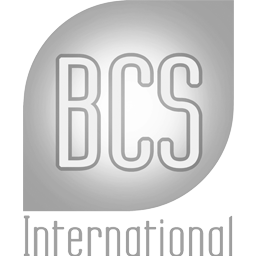Which Platform for your Campaign

Coming up with a compelling Crowdfunding campaign is not easy and will require some effort in planning. Finding the right Crowdfunding platform to use is a good start.
Reward-based Crowdfunding offers one of two funding options. While some platforms will allow project creators to keep the funding raised whether or not the goal is reached (flexible or keep-all), others let Creators keep the funding raised only if they attain their goal (all-or-nothing). Most platforms will take a larger share of funds raised in flexible funding/all-or-something.
Crowdfunding platforms charge project creators a platform fee 2-7% depending on the platform you are using. Additionally, a 2-5% is charged for credit card processing. There may be other charges so it worthwhile checking, as you need to factor that into your budget.
It is estimated that there are over 1,000 Crowdfunding platforms available. Each platform has certain unique features and tools suited for different projects. Universities, colleges and other organisations are setting their own platforms and there are dozens of niche platforms to choose from. Here are few top options.
No list would be complete without Kickstarter Crowdfunding platforms. Over 70,000 projects have been launched on the Kickstarter website since 2009 when it was launched. It guarantees a 45% success rate having seen over $300 million raised through their website. Kickstarter’s website range in 400-500 top websites in Google – so they really have some clout.
Kickstarter is a popular platform for start-up projects and new product development projects. However, it has its roots in art artists, designers, and musicians but has gained traction for many emerging entrepreneurs. As it is a reward-based platform Perks, products or merchandise are usually offered in return for pledges. There are limitations on the type of project you can post on Kickstarter it must be a creative or innovative item and there is a long list of prohibited product including things that are illegal or immoral.
As with all Crowdfunding platforms, projects are vetted which takes up to a week for approval. Funding is based on all-or-nothing, where project Creators who do not attain their targets lose and don’t receive any funding, nor are they charged for the service. Backers are not charged in such a situation. Successful projects are charged 5% platform fee plus a 3%-5% additional fee for credit card processing
Kickstarter’s all-or-nothing model is one of the things that turns Creators off but turns Backers on. It’s the do–or-die, it creates that extra push to make the difference to whether the Backers get sufficiently engaged to pledge their support and the project lives or dies.
Kickstarter knocks back around 40% of all projects submitted. If the project is not creative (artwork, music, movie) or if isn’t an innovative product you will not be accepted. Kickstarter will not support the creation of a business. For example one project was knocked back as some of the funding was to purchase production tools. After 3 attempts the project was finally accepted and went on to be successful. Kickstarter sees their niche in the creative space and not in the form of offering some form of mezzanine funding for ongoing businesses.
Recently Kickstarter has apparently lowered the bar to entry and done too far the other way for allowing projects that are inane or pointless (Potato Salad) or directly infringe on the intellectual property of projects that has previously been run on Kickstarter. A few weeks after the successful funding of a potato salad recipe on Kickstarter in the USA there were dozens of similar projects trying the same thing few even had a single pledge.
Kickstarter have a short list of Twitter hash tags, that means whenever someone tweets with that hash tag the chosen campaigns are only a few projects that are listed.
Indiegogo is one of the largest Crowdfunding platforms in the world but a fraction of the size of Kickstarter. It is one of the main competitors to Kickstarter and has a great following. Many creators prefer to use Indiegogo some even if they have used Kickstarter previously. Launched in 2008 it was one of the first Crowdfunding platforms and has gained mainstream appeal due to its anything-goes approach and has hosted over 30,000 campaigns.
Indiegogo user interface is simple and easy to use. Deadlines for projects are longer than what other platforms allow up to 4 months. Another difference is that it uses a flexible funding “keep-all” which allows organizers to keep whatever amount they raised regardless of whether the goal was achieved or not. Indiegogo are considered to offer more support.
A 4% charge is incurred if the organizers attain their goal, and a 9% charge for campaigns that do not attain their goal. Also a 2.9% credit card processing charge is applicable. Meaning Indiegogo is one of the most expense platforms with a total fee of nearly 12% on projects that fall short of their goal. Indiegogo want to discourage creators from not meeting their goal, however the increase in fees may seem somewhat arbitrary and punitive for genuine creators who just don’t quite make it.
GoFundMe is a user-friendly Crowdfunding site. Almost any project can use this platform as long as the cause is justifiable and legal. The fees are 5% plus credit card fees across the board regardless of the funding model you chose.
Pozible is an Australian Crowdfunding site, that claims to be the 3rd largest in the world. There beautiful website offers a sliding scale of fees that starts at 5% plus credit card fees and reduces to 4% and then 3% for significantly higher project attainments.
There are hundreds of other Crowdfunding platforms like AppFunder, Quirky, RocketHub, and Nettfunder. Quirky and Assembly Made are platforms suited for software products on their preliminary stages.
For projects that have a completed prototype ready for launching, Kickstarter and Indiegogo (and Nettfunder) are good options. They require that you include a workable prototype of the product.
Nettfunder is a platform dedicated for product and product development. It incorporates ideas pages, for any Creator to post ideas for comment and syndication. A Peer review pages to help Creators prior to their campaign, to gain traction and point the audience from Social Media or other forums.
Nettfunder allows posts from all key persons involved in the product development and who contribute to the innovation process. Nettfunder also has a loyalty program, and at the time of writing this article are rolling out an affiliate program to help boost backer volumes.
There is some debate over whether to find a project on multiple platforms. The arguments for sticking to one platform is that you can be highly focussed and direct all you potential backers to that platform. Also if the campaign hits the right trigger points then the platforms own marketing will kick-in and the campaign will appear as a staff pick and/or in the newsletter. This will boost the sales. But this is only in the case of the project hitting some trigger points.
However, there is no clear picture as to what these trigger points are. Kickstarter for example seem to have some human intervention in the form of a Staff Pick, while Indiegogo have a stated algorithm that works out which campaign is most popular. You don’t really know if or how your project will get any boost from the platform itself. Also, these bigger platforms have so many campaigns the competition to rise to the top of the heap is fierce. Kickstarter have a reputation for not offering support an expect you to just work with what they offer, work it out for yourself attitude and you are in the mix with hundreds or even thousands of creators.
Choosing a smaller platform, like Nettfunder virtually guarantees that you will get the support of their network and marketing smaller though it maybe. Also, even successful campaigns on the larger sites can only account for 10% of the conversions coming from the platform website or newsletter. This is because people browsing the website are less engaged with the project and less likely to backer, support or share the project. Some platforms will invoke their own network of press, marketing or other specialists. At the end of the day the platform is just that, the creator is ultimately responsible for building the product and the support for it.
Dual campaigns may offer some advantages worth considering. Firstly if you post with a smaller platform first, Say Nettfunder and get that support and leverage from the smaller platform’s network. Then post to the larger a larger international platform. For example to access a larger market for an Australian project offering to potential backers in the USA. In this way the project may begin to succeed on the larger platform as well and the larger platform’s marketing, newsletter and network kicks-in and will boost the campaign.
Finally you don’t have to wait to have the prototype ready. You can opt to create a pre-launch Crowdfunding campaign on PitchFuse or Nettfunder that has a prelaunch area built in.
Leave a Reply
You must be logged in to post a comment.






Share This